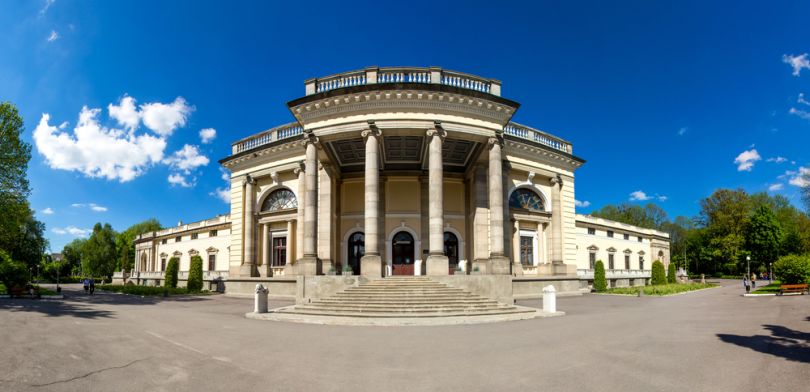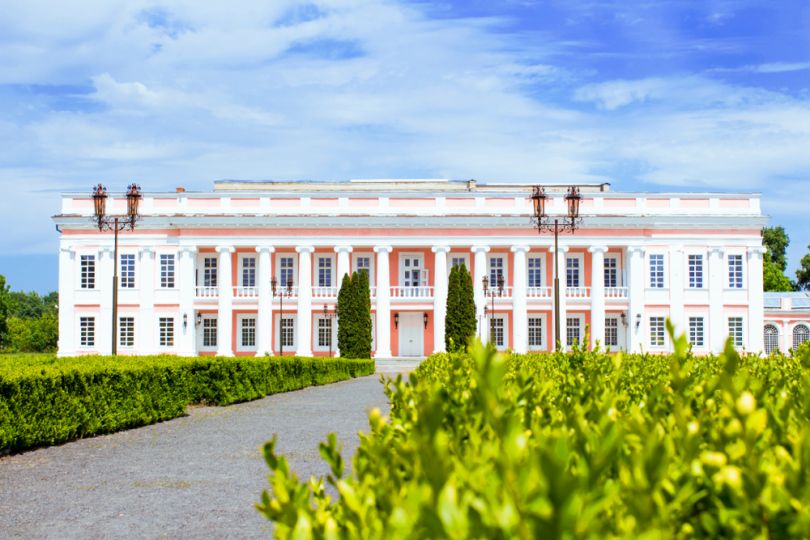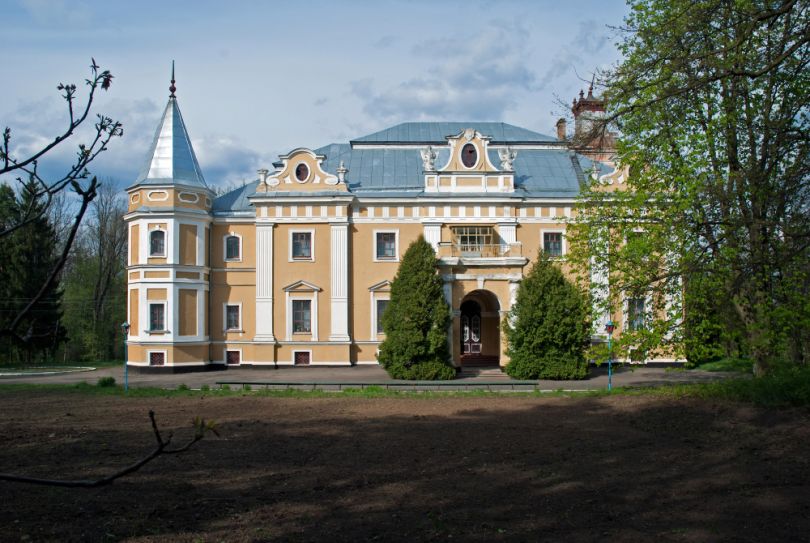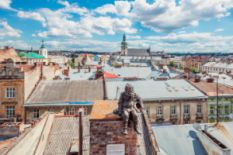Sherbatova Palace in Nemyriv

Sherbatova palace, a beautiful building in the style of Neoclassicism, is the poshest residence in Nemyriv. Near the palace entrance, you will see sophisticated sculptures of sleepy lions made of Carrara marble. Few centuries ago, Nemyriv was owned by Potocki family – similar to Tulchyn and many other Ukrainian towns. In the XIX century, Boleslav Potocki decided to make a contribution to the development of Nemyriv. He built here school, two churches, several industrial buildings and the new palace. In the end of the century, Boleslav`s granddaughter Maria Sherbatova ordered to pull the old palace down and to build a new residence. The duchess chose Czech architect Jiří Stibral who managed to bring her dreams into life: he designed a castle similar to the one that Maria had seen in England. According to the legend, the duchess believed the prophecy of a fortuneteller who told that Maria would not die until the construction of the castle was not finished. The main construction works ended in 1900, while the works on internal and external finish were still in progress. In 1920, despite the fact that the residence was still under construction, the duchess and her children were killed by the Bolsheviks. Nowadays Sherbatova palace, surrounded by picturesque park with territory of 85 hectares, is used as a health resort.
Potocki Palace in Tulchyn

Potocki palace in Tulchyn town is a magnificent architectural sight in the style of Classicism built in the second half of the XVIII century. The construction of the palace began in 1782 according to the project of French architect Lacroix based on the order of Potocki family. Potocki was a noble Polish family that owned many territories in Ukraine. The different members of that family were great military commanders, government leaders and cultural figures. In modern time, reconstructed Potocki palace in Tulchyn is in the best condition comparing to all the other Potocki family`s belongings. Nowadays Tulchyn Culture School is located in the palace. From 2017, Potocki palace also started to host OperaFest – a large festival of classic music. This place is very popular among tourists and locals. There are many interesting legends about this palace. For example, some people say that here duke Potocki met his future wife Sofia, who inspired him to create the famous landscape park in Uman. Another legend says that in this palace the eminent Russian poet Alexander Pushkin met daughters of duke Potocki. This meeting gave him ideas for his famous works “Yevgeniy Onegin” and “The Fountain of Bakhchisaray”.
Voronovytsia Palace

The palace in Voronovytsia village is an important historical and architectural landmark in the style of early Classicism built in 1770–1777. The author of the project was the architect Lorenz Gedon who kept to the style of Italian architectural era of Andrea Palladio, well-known for his palaces with slightly curved side wings. This architectural and park complex was built by the order of Polish magnate Frantishek Grokholsky – the important political and government leader who was also a big fan of art. In 1869, the palace was sold to the captain II rank Mykola Mozhaisky (according to the other version, Mykola won the palace at cards). His brother Alexander Mozhaisky, who also lived in the palace, invented the first model of airplane with steam engine in the world. Nowadays, the Museum of Aviation and Cosmonautics is located in the palace. By the way, Voronovytsia palace has been recently reconstructed: the EU granted UAH 30 million for restoration works. The renovated palace opened its doors in 2017.
Sobansky Palace in Verkhivka

In the XVII century, Verkhivka village in Vinnytsia region was owned by duke Felix Potocki. Afterwards, he gifted this territory with peasants to the landowner Mikhail Sobanski. Rich Sobanski decided to build a palace here. The construction of the new residence designed in the Neo-Baroque style lasted from 1861 to 1894. In 1891, a large landscape park was arranged around the palace. The park had many beautiful trees and flowers from the different corners of Ukraine and Western Europe. The palace was reconstructed few times during the XX century; so now it is in a really good condition. Visitors are impressed by the beautiful sculptures on the building`s façade and by old elements of the interior design such as spiral stairs to the attic floor. After the revolution, the lands around the Sobansky palace were used as a horse ranch; in 1932, the palace became an agricultural high school. Nowadays, this gorgeous building hosts Verkhivka college.
Mering Palace in Stara Pryluka

This palace in Stara Pryluka village was built in the XVIII century when the city was owned by the Polish magnate family Varshitsky. Since then, the building has been reconstructed many times. The last reconstruction took place in 1906. In that time, the palace was possessed by Sergiy Mering – the son of the famous Kyiv doctor Fedir Mering. Sergiy decided to renovate palace keeping to Neo-Baroque style that we can see today. The building looks very similar to the well-known Maryinsky palace in Kyiv. Some of its rooms, including entrance hall with majolica finishing, are designed in the Moresque style, strongly reminding of Spanish complex Alhambra. Some rooms have ceilings made of redwood. In modern times, the building of Mering palace hosts boarding school.
A visit to the old palaces of Vinnitsia region is an interesting journey to the world of Ukrainian history. Welcome.
Photo source: shutterstock.com, Google pics. All photos belong to their rightful owners.








